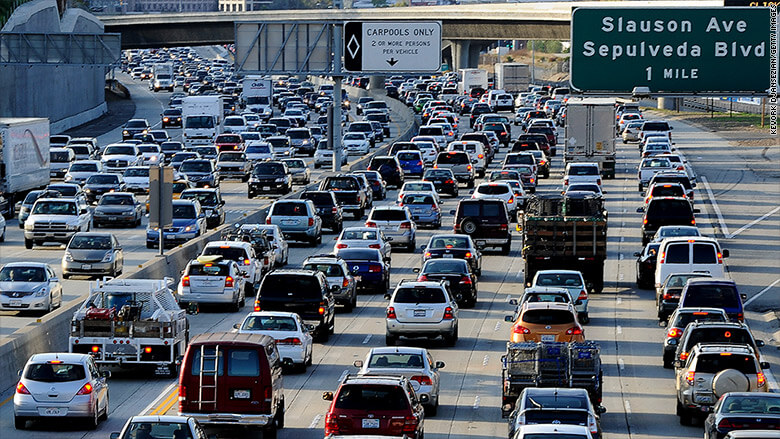Occupational hazards in the Oil and Gas Industry : 5 important ways to reduce risk

Occupational Hazards – Today’s oil and gas industry is constantly evolving – and so are the risks. Whether you’re an energy manufacturer or supplier, a midstream company, or a pipeline contractor, there are unique exposures at every stage of the process.
Serious workplace injuries cost companies more than $58 billion per year, according to the 2021 Liberty Mutual Workplace Safety Index, and between 2015 and 2019, 431 oil and gas extraction workers were killed on the job, resulting in an annual fatality rate more than six times higher than the rate among all U.S. workers.
Great strides in safety have been made, with the oil and gas extraction industry experiencing a decline in the overall rate of fatalities in recent years. But in an industry with a goal of zero incidents there’s always room for improvement. In this article, we’ll explore five important ways to reduce risk across your company.
1. Strengthen fall and struck-by protections.
A recent analysis of occupational fatalities among oil and gas workers during 2003–2013 found a decline in all leading causes of death except for fall events, which actually increased during that 10-year period.
While the decreasing rates suggest that safety might be improving, the findings also indicate that implementation of additional controls could prevent deaths from falls.
Workers in this industry spend a great deal of time working at heights, especially on the rig floor, which is located up to 30 feet above ground, and in other elevated locations as well.
A 2017 report by the Centers for Disease Control and Prevention shed light on the categories of workers who are at highest risk for fall fatalities in the U.S. oil and gas industry. This research found most fatal falls occurs among derrickmen who handle pipe from the derrick board, rig up the drilling rig at the well site, or dismantle the drilling rig in preparation for transport.
To mitigate these struck-by risks, technological advances are helping to make drilling and rig environments safer. For example, iron roughnecks, automated pipe handling systems, and digital technology are used to monitor drilling systems, blowout prevention equipment is stopping inadvertent pressure releases, and digital monitors and cameras are picking up danger points, alerting workers and supervisors if something is going wrong.
In addition, providing training on how to identify and reduce hazards of working at height, and ensuring proper use, fit, and inspection of personal fall protection equipment are key pieces of a successful safety protocol.
2. Prioritize driver fatigue programs.
Oil and gas workers often drive long distances from their homes, lodging sites, and equipment yards to reach well sites located in remote areas. The combination of long trips with long shifts can result in fatigue.
In fact, motor vehicle crashes cause more than 40 percent of work-related deaths in the oil and gas extraction industry, and driver fatigue is a contributing factor in many of these accidents. In addition to the loss of life, the average on-the-job fatal crash is estimated to cost employers $671,515. On top of that, legal settlements can be even more costly.
Despite these facts, driving is often an exposure or risk that’s overlooked. It really comes down to protocols that consider driving tasks within the scope of work. For example – planning and making accommodations for sleep and rest when working away; and good journey management decisions during daily work activities.
Several factors put oil and gas workers at increased risk for drowsy driving. For example:
- Monotonous tasks. Driving for extended periods of time with few changes in routine can increase workers’ risk of fatigued or inattentive driving
- Awake time. Simply put, the more hours awake, the more likely people are to be fatigued. And small sleep deficits accumulated over time can also result in impaired driving.
- Medications or health conditions. Illnesses, diseases, and some medications may interfere with workers’ alertness on the road.
To address these issues and decrease the chance of driver fatigue, integrating a strong fatigue management program into your existing health and safety management system is a great first step. To achieve this goal, consider these tips, as recommended by the National Institute for Occupational Safety and Health (NIOSH):
- Limiting hours employees may work and drive per day or trip segment.
- Providing a rested driver to transport workers from remote sites after extended shifts.
- Educating workers about how alcohol and drugs impair driving, and the possible side effects of prescription and over-the-counter medications.
- Using technologies to detect fatigue before driving (such as actigraphs that monitor rest/ activity cycles) and while driving (such as lane departure warning systems).
- Communicating regularly by checking in with drivers to create a culture of caring and response. Consider that 90 percent of employers feel the impact of fatigue on their organizations, including observing safety incidents involving tired employees and declines in productivity, while just 72 percent of workers view being tired as a safety issue.
- Ensuring workers are knowledgeable of their right to use stop work authority to avoid fatigued driving – and that they’re not penalized for it.
3. Employ lone worker protections.
Lots of job activities involve lone workers in remote locations, collecting fluid samples out of tank batteries, and monitoring well performance, Standing notes.
That’s why establishing effective safety monitoring practices for lone workers are just as important as managing the safety of other employees, he says. Hazard control measures may include the essentials of:
- Awareness information.
- Appropriate supervision methods.
- Protective equipment.
- Communication and monitoring devices.
But to increase surveillance and safety, having a journey-management program in place is a must. It should require a high level of communication between dispatchers and yard operations, and Standing says the notification process should include these reporting steps:
- I’ve arrived on-site.
- I’m getting ready to perform the task and completed the job safety analysis.
- I’m finished and I’m going to my next site.
Technology also plays an important part in strengthening lone worker safety. Using vehicle telematics and GPS, as well as wearable devices and monitors, can provide an extra level of protection for lone workers.
For example, safety smartphone apps can give lone workers the ability to notify employers and emergency personnel that help is needed via a simple action such as pulling a wrist tether from an unlocked phone. Once signaled, authorities are immediately dispatched to the worker’s location, discovered through GPS monitoring from the mobile device.
4. Evaluate and control silica exposures.
Now that hydraulic fracturing, or fracking, is widely used to tap previously unreachable oil and natural gas, larger quantities of silica sand are transported, moved and blended before high-pressure drilling operations – all of which can release respirable dust into the air. Workers can be exposed if they breathe the crystalline silica dust into their lungs.
To control overexposures and increase worker protections, OSHA’s Respirable Crystalline Silica Standard calls for best-practice recommendations that are a combination of engineering controls, work practices, protective equipment, and product substitution where feasible.
Sand mover and T-belt operators appear to be at greatest risk, but other on-site crew may be at risk as well. Determining worker exposure levels is important for selecting the right type of control measures, NIOSH states, especially for engineering controls and respiratory protection. For example, half-face respirators are not protective for silica levels over 10 times the exposure limit.
Your safety efforts should take a three-pronged approach of 1) procedural changes, such as mandating cam-lock caps on sand movers and reducing drop height into blender hoppers; 2) equipment changes, such as using HEPA-filtered cabs or booths and maintaining local exhaust ventilation; and 3) respiratory protection for silica exposures above the OSHA-permissible exposure limit (PEL) of 50 µg/m3, averaged over an 8-hour day. Hydraulic fracturing operations in the oil and gas industry must implement engineering controls to limit exposures and protect workers according to OSHA standards.
5. Broaden talent management solutions.
Cycles of boom and bust are routine in the domestic oil and gas industry as supply and demand respond to new technologies, evolving political landscapes, and other critical developments. This cyclical nature creates a fundamental challenge when it comes to managing workforce stability, as companies staff up or down accordingly.
Experienced employees often jump between companies during high demand cycles, lured away by wage increases, as wage pressures increase with increased demand and a limited supply of experienced workers.
To attract and retain employees in any market, companies should focus on building a scalable workforce development function that can respond to cyclical ups and downs. They should also continue to source ready talent pools, and strengthen loyalty and engagement.
One effective way to do that is through technical training, or partnering with technical schools, high schools, and junior colleges in local areas to get young people interested in the industry.
Such partnerships provide relationship-building, not to mention rig-training, oil well education and other industry best practices that can make better employee matches and job fits – reducing costly turnover in the long run.
Energy companies in the oil and gas industry face situations that require specialized insurance solutions. To help better control their total cost of risk, Liberty Mutual offers proven risk-management strategies that are targeted to this sector. Learn more about our tailored solutions here.

Comments are closed